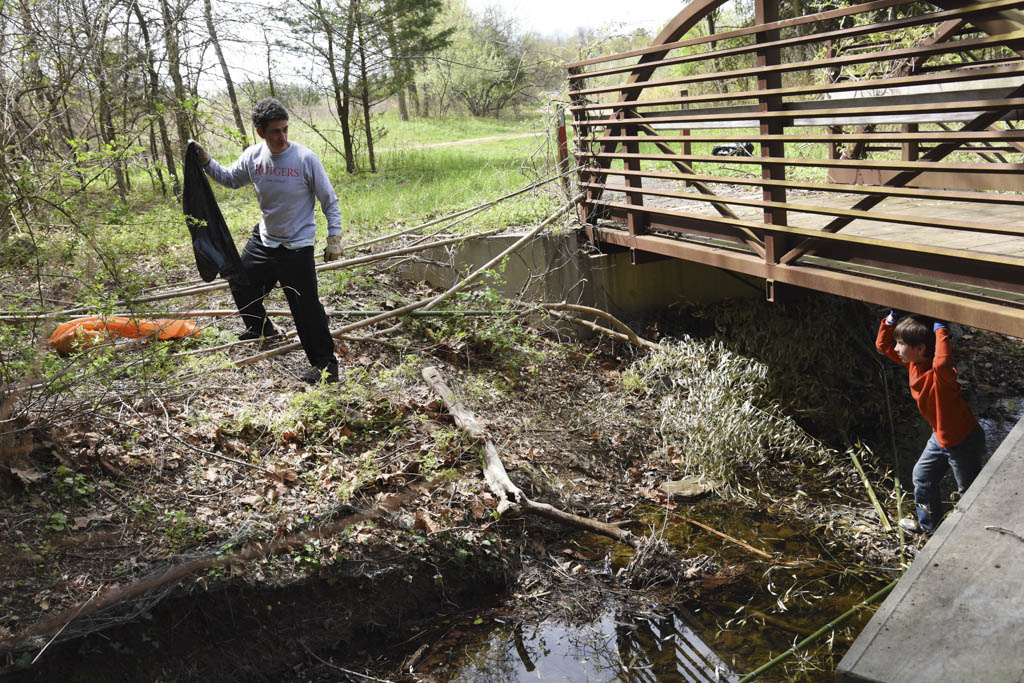BY KATHY CHANG
Staff Writer
OLD BRIDGE — As cleanup at the Margaret’s Creek sector of the Raritan Bay Slag Superfund site finally begins, a battle of who is eventually going to pay for the cleanup continues to ensue in the courts.
In a decision last month, the Supreme Court of New Jersey ruled against NL Industries’ complaint seeking contribution from the state in its role to the contamination to Raritan Bay. NL Industries was formerly known as the National Lead Company.
“I believe the court was correct in ruling that National Lead is responsible for the cleanup and the company must meet its obligation to pay for the cleanup,” Congressman Frank Pallone Jr. (D-Middlesex, Monmouth) said.
NL Industries had filed a complaint seeking contribution from the state under the Spill Act, alleging that the state caused or contributed to the Raritan Bay contamination in its roles as regulator and riparian landowner.
In 2014, the New Jersey Department Environmental Protection Agency (EPA) directed NL Industries to conduct a $79 million cleanup at the site.
NL Industries has been identified as a party responsible for the cost of cleanup. Historical documents provide evidence that at least some, if not all, of the slag found at the site came from the former National Lead Company facility in Perth Amboy, which was in operation approximately 40 years ago.
As the court battle continues, the EPA is beginning to clean up the Margaret’s Creek section in the Laurence Harbor section of Old Bridge.
In October 2016, Pallone announced $7 million in funding from the EPA to begin cleanup at Margaret’s Creek, one of the three sectors of the overall site, which spans 47 acres.
“I was proud to help secure $7 million in EPA funds to begin the cleanup of Margaret’s Creek at the Raritan Bay Slag Superfund site last year,” he said. “The creek is a small part of the overall site, which is approximately 1.5 miles in length and includes the Laurence Harbor seawall and the western jetty at the Cheesequake Creek.”
Pallone said residents have waited too long for cleanup efforts to begin.
“As National Lead sought to dodge its cleanup obligations through the courts, residents have continued to live in close proximity to contaminated areas, and have been cut off from access to the beachfront by a chain fence for years,” he said. “The funds awarded last year will help protect the public, as well as the environment, and make progress toward enabling the local residents to again utilize this area safely.”
Pallone said he hopes that those in Washington, D.C., who are trying to cut the EPA budget examine Margaret’s Creek and recognize the enormous impact that the Superfund program can have.
Areas within the Margaret’s Creek sector where battery casings, slag and lead contaminated soil and sediment have been identified will be excavated and disposed of off-site.
The work is expected to take approximately eight months from start to finish. The work hours — 40 to 45 hours a week — will occur between 7 a.m. to 4:30 p.m., Monday through Friday.
Preliminary site preparations are ongoing and include mobilizing the site, clearing and grubbing brush, identifying utilities and constructing a staging area and access roads.
Due to the proximity of local businesses and residential areas to the site, public safety is a high priority.
Protective measures that will be utilized at the site include dust suppression, perimeter air monitoring, fencing and security during non-work hours and holidays.
The Laurence Harbor seawall, which makes up part of the site, was reported to have had metal slag from blast furnace bottoms deposited along the beachfront in the late 1960s and early 1970s.
About 2,500 feet of the seawall have been impacted.
As a result of urging by Pallone, the NY/NJ Baykeeper, the Raritan Bay Community Advisory Group (CAG), and the township, the Raritan Bay Slag site was placed on the Superfund National Priorities List in 2009. The site spans from the waterfront in Old Bridge to the waterfront in Sayreville.
Contact Kathy Chang at [email protected].

